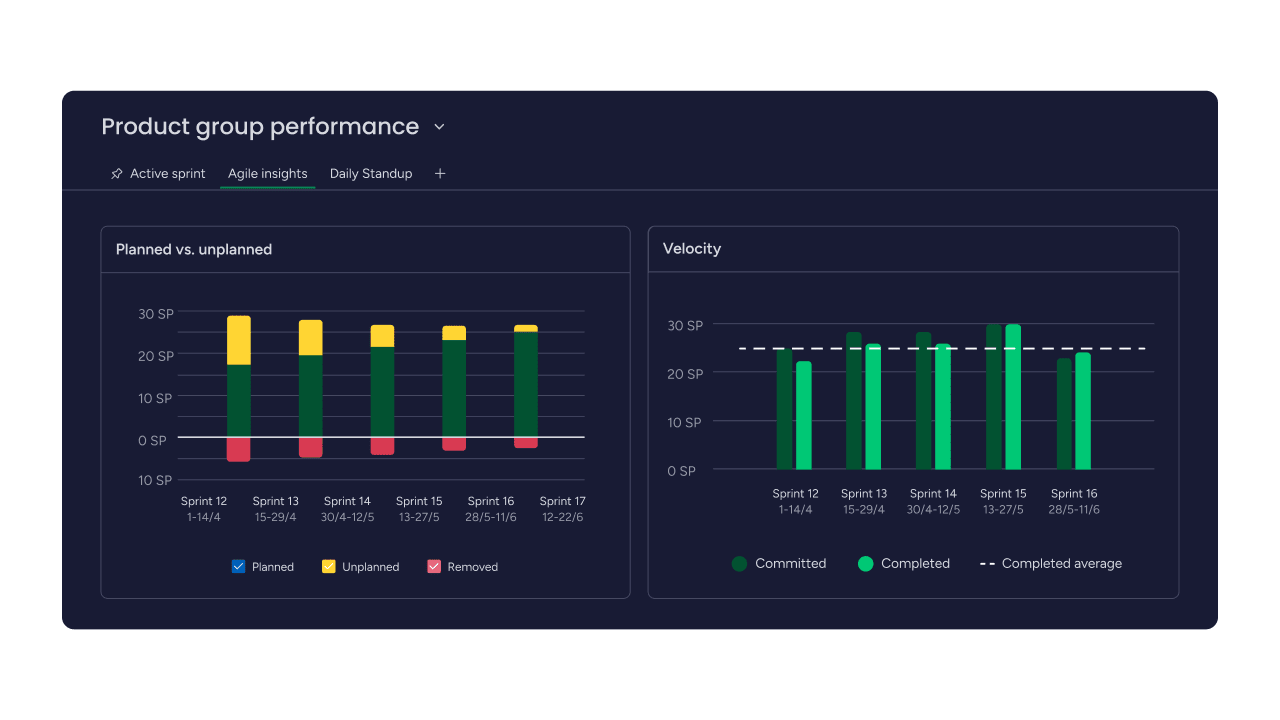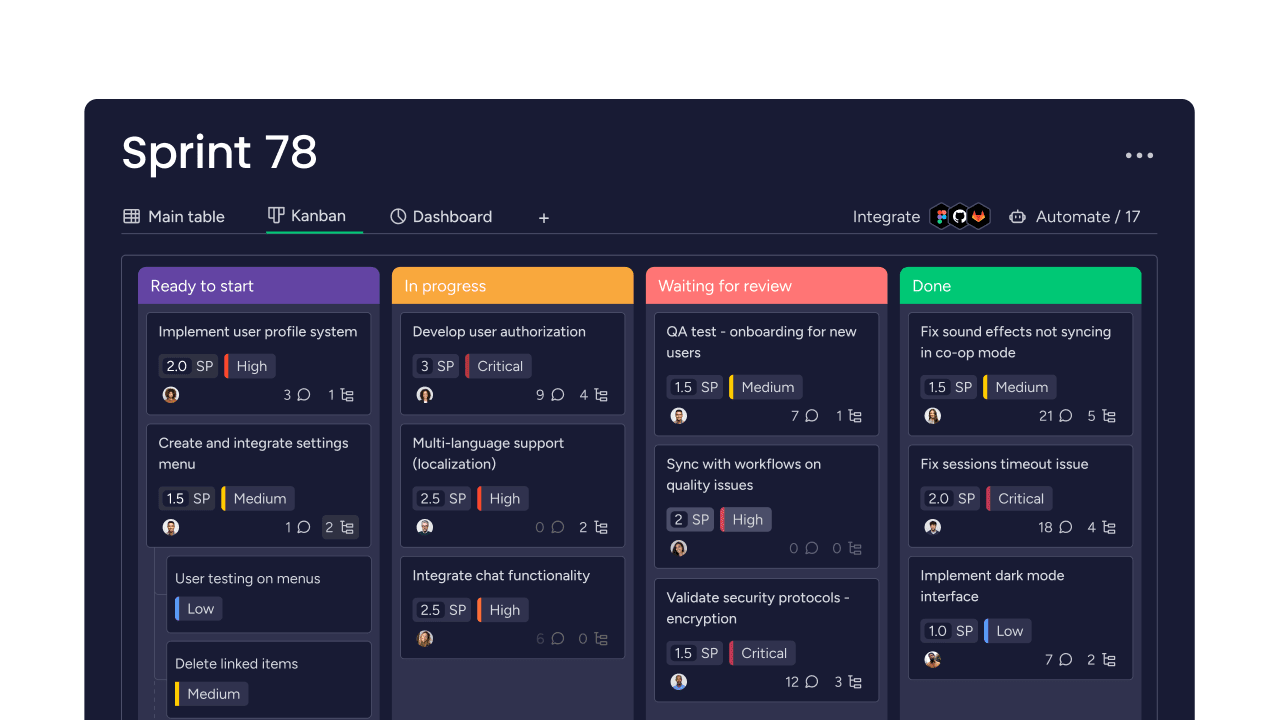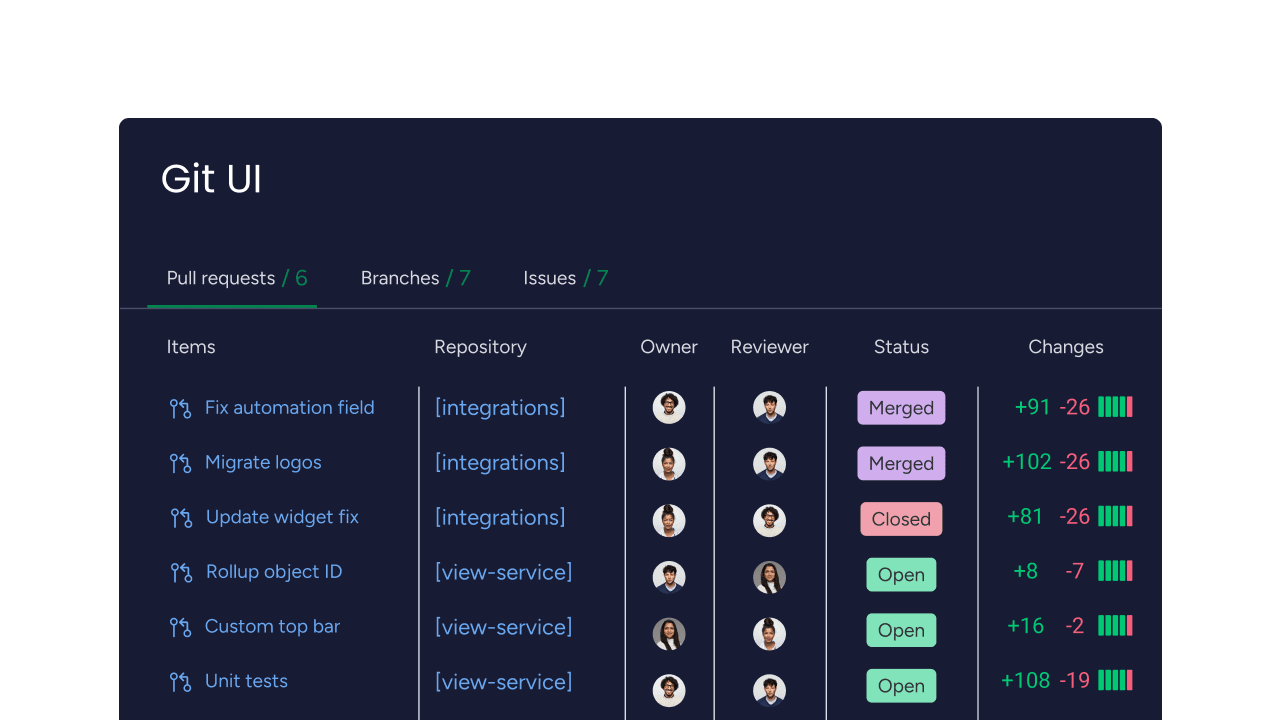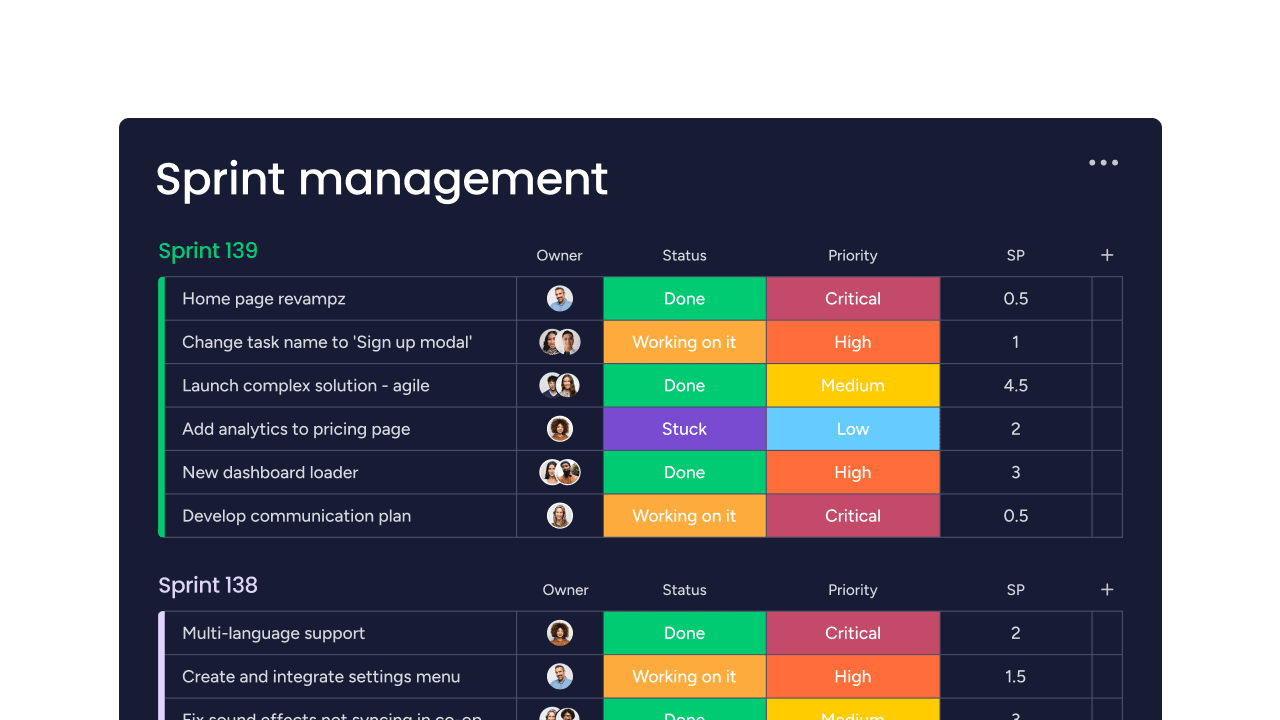For decades, strategic planning meant creating a detailed, multi-year roadmap. But in markets that shift quarterly, those rigid plans often become irrelevant before teams can fully implement them. This gap between plan and reality creates wasted resources, missed opportunities, and teams that are misaligned with current market needs.
An Agile strategy provides a more responsive approach, turning planning from a static document into an adaptive, living process. Adopting this model helps organizations move faster, reduce risk, and align everyone from engineering to leadership around shared goals.
This guide walks through what an effective Agile strategy looks like in practice. It covers the core components, the key benefits for development teams, and the steps to build a framework that supports continuous feedback and rapid adaptation.
Key takeaways
- Replace fixed plans with cycles: Agile strategy replaces rigid annual plans with flexible, shorter planning cycles (monthly or quarterly sprints) that adapt quickly to dynamic market changes.
- Collaboration catches blind spots: cross-functional teams drive better strategic decisions by bringing diverse perspectives together, enabling organizations to break down silos and create more realistic, holistic plans.
- Test ideas before committing: strategy is executed through small, validated experiments (pilot programs) to reduce financial risk and prove what actually works before committing major resources to an unproven path.
- Flexible platforms enable adaptation: platforms like monday dev provide customizable strategic planning boards that easily adapt to your chosen short planning cycles, allowing workflows to evolve as teams learn what works best.
- Focus on outcomes, not adherence: strategic success is defined by achieving desired business outcomes (like revenue growth or customer retention), rather than the non-Agile metric of following the original plan perfectly.

What is Agile strategy?
Agile strategy is a flexible, adaptive approach to organizational planning designed to help businesses respond rapidly to market shifts and change. It replaces rigid, multi-year plans with shorter, iterative cycles and continuous adjustments driven by real-time performance data and market feedback.
This approach is best understood as dynamic course correction, unlike traditional planning methods. While conventional strategy relies on a fixed, pre-determined route, an agile strategy constantly recalculates its path as internal and external conditions evolve, ensuring the organization moves toward its long-term objectives via the most efficient route available at any given moment.
The key components that make Agile strategy work include:
- Short planning cycles: weeks or months instead of years.
- Continuous feedback: regular input from customers and teams.
- Rapid pivots: quick adjustments based on new information.
- Cross-functional teams: breaking down silos between departments.
Core components of Agile strategy planning
Building an Agile strategy requires specific elements that work together. Each component serves a purpose in creating a responsive planning system that can handle uncertainty.
- Vision without rigidity: forms the foundation. You need clear goals that guide decisions but don’t lock you into specific methods. This means setting objectives like “expand market share” rather than “open five new offices.”
- Cross-functional teams: bring different perspectives to strategic decisions. When product, sales, engineering, and customer success collaborate on strategy through Agile product management, you catch blind spots and create more realistic plans.
- Experimentation frameworks: let you test ideas before committing major resources. Running small pilots is also a common approach in Agile software development to validate assumptions and reveal what actually works in your market.
- Adaptable tooling and workflows: utilizing platforms like monday dev that support customizable strategic planning boards allows teams to design workflows that match their Agile planning cycles, whether that involves monthly sprints or quarterly reviews.
- Data-driven decisions: replace gut feelings with measurable insights. You track metrics that show early signals of success or failure, allowing course corrections before problems grow.
- Stakeholder engagement: keeps your strategy connected to reality. Regular input from customers, employees, and partners ensures you’re solving real problems, not theoretical ones.

Agile strategy vs traditional planning
Understanding the differences between Agile and traditional planning helps you choose the right approach for your situation. Both have their place, but they work best in different contexts.
Traditional planning creates detailed roadmaps for multiple years. According to McKinsey’s 2024 strategy survey, nearly half of executives report it takes at least four months to develop and approve three to seven year strategic plans. Leaders make decisions at the top and cascade them down. Success means following the plan as written. This works well in stable industries with predictable change, while teams in fast-paced sectors might consider frameworks like Kanban vs Scrum to facilitate iterative planning.
Agile strategy operates differently:
| Traditional planning | Agile strategy |
|---|---|
| Annual cycles | Monthly or quarterly sprints |
| Fixed roadmaps | Adaptive plans |
| Top-down decisions | Collaborative planning |
| Success = plan adherence | Success = outcome achievement |
| Formal change processes | Continuous adaptation |
How do you know which approach fits your needs? Consider your market dynamics. Fast-changing industries with new competitors, shifting regulations, or evolving technology benefit from Agile approaches. Stable industries with long development cycles might still prefer traditional planning.
Flexible solutions like monday dev bridge both worlds by offering planning templates that adapt to your chosen approach. You can start with traditional structures and gradually introduce Agile project management as your team becomes comfortable.
5 key benefits of Agile strategies for teams
Agile strategies deliver specific advantages that directly impact your bottom line. Over time, as your organization builds Agile best practices, these benefits compound.
- Faster market response: means capturing opportunities your competitors miss. When a customer needs a shift, Agile teams adjust within weeks. Traditional planners might need months for approval processes.
- Risk reduction: comes from testing ideas small before betting big. Instead of investing millions in unproven strategies, you run pilots that validate or disprove assumptions quickly.
- Team alignment: improves when everyone understands current priorities. Agile planning’s transparency reduces confusion about what matters most right now. Teams stop working on conflicting initiatives.
- Resource optimization: happens naturally when you can shift people and budgets to high-impact work. McKinsey’s 2024 research found companies that incentivize leaders to reallocate resources are 1.8× more likely to report revenue growth outperformance. You’re not locked into annual allocations that made sense six months ago but don’t anymore.
- Competitive advantage: grows from your ability to adapt faster than rivals. While they’re stuck in planning cycles, you’re already executing on new opportunities.

When to implement an Agile strategic planning model?
Certain conditions signal that your organization would benefit from Agile strategic planning. Recognizing these indicators helps you time your Agile transformation effectively.
- Market volatility: creates the most obvious need. When customer preferences change monthly or new competitors appear constantly, annual plans become fiction. You need planning that matches market speed.
- Innovation pressure: pushes organizations toward Agile approaches. If you’re developing new products or entering new markets, you can’t predict what will work. Agile planning lets you learn and adjust.
- Digital transformation: often requires Agile strategy. Technology possibilities evolve too fast for traditional planning. What seems impossible today might be standard next year.
Consider these specific scenarios where Agile strategy adds value:
- Scaling startups: growth creates new challenges daily.
- Market disruption: your industry faces new business models.
- Customer evolution: buyer behavior shifts rapidly.
- Regulatory change: new rules require quick adaptation.
Traditional planning still works for infrastructure projects, regulated industries with long approval cycles, or stable markets with predictable demand. The key is matching your planning approach to your reality.
6 steps to build your Agile strategy
Moving to an Agile strategy can feel like a big leap, but the transition is much simpler when you break it down. Here are the six steps that help teams move from static plans to a flexible, responsive planning rhythm that actually works in fast-moving environments.
Step 1: assess your strategic baseline
Start by examining your current planning processes. How long do decisions take? Where do bottlenecks occur? What prevents quick pivots when needed?
Ask your team these questions: Can we respond to market changes within a month? Do all departments understand current priorities? How often do our annual plans actually match reality?
Step 2: define adaptive objectives
Create goals that provide direction without constraining methods. Use frameworks like OKRs that separate outcomes from activities.
Good adaptive objectives focus on results: “Increase customer retention” rather than “Launch loyalty program.” This leaves room for finding the best approach through experimentation.
Step 3: build cross-functional teams
Assemble groups with diverse skills and perspectives. Include people who understand customers, operations, technology, and finance. Give them real decision-making power.
Define clear roles but keep them flexible. Who makes which decisions? How does information flow? What happens when priorities conflict?
Step 4: create feedback systems
Build mechanisms that bring market intelligence into your planning. This includes customer interviews, competitive analysis, and performance data.
Modern solutions like monday dev help by centralizing feedback from multiple sources. Teams can track customer input alongside strategic initiatives, seeing connections between market signals and planning decisions.
Step 5: design sprint-based planning
Structure your planning in short, focused cycles. Most teams find monthly or quarterly sprints work well. Each cycle should include reflection, planning, and clear deliverables.
Set regular checkpoints for reviewing progress and adjusting course. This rhythm creates predictability while maintaining flexibility.
Step 6: measure and iterate
Track both leading and lagging indicators. Leading indicators predict future success. Lagging indicators confirm past results. You need both for effective Agile strategy.
Use insights to improve your process continuously. What worked? What didn’t? How can the next sprint be more effective?

Types of agility your organization needs
Agile strategy requires different types of flexibility working together, including an Agile development process. Missing any dimension limits your effectiveness.
- Leadership agility: this requires leaders to shift their role from commanders to coaches, embracing uncertainty and empowering teams to make decisions. It’s reflected in behaviors like asking, “What did we learn?” instead of demanding adherence to the original plan.
- Operational agility: this means ensuring your internal processes can support rapid changes. This covers everything from Agile budgeting and project management to flexible performance reviews. It is supported by workflows that adapt without requiring a complete system overhaul, an approach also central to Agile SDLC.
- Cultural agility: often the biggest challenge, this requires fostering a culture of psychological safety, where people are encouraged to experiment, can fail without punishment, and are rewarded for adapting rather than just executing predetermined plans.
- Technical agility: this is dependent on a technology stack that supports quick changes. Your systems must allow you to launch new initiatives rapidly and provide real-time data for strategic decisions. Modern platforms, cloud-based systems, and no-code solutions reduce these technical barriers.
Agile strategy trends shaping 2026
Agile strategy is constantly evolving, driven by new technologies and global shifts in the workplace. The most successful organizations are looking beyond simple execution to integrate predictive intelligence, continuous market feedback, and seamless coordination across distributed teams. This forward-looking approach defines the key trends shaping how development and product strategy will be executed in 2026 and beyond.
AI-powered strategic planning
Artificial intelligence transforms how teams analyze markets and make decisions, an approach often summarized as AI for Agile. MIT Sloan’s 2024 global survey found that 60% of managers say improving KPI quality is a priority, and 90% of organizations using AI to create new KPIs report improvements. AI can process vast amounts of data to spot patterns humans miss. It can simulate scenarios and predict likely outcomes.
Real-time market adaptation
Organizations develop systems for continuous market monitoring. Instead of quarterly reviews, they track signals daily. This includes social media sentiment, competitor moves, and customer behavior changes.
Real-time adaptation requires new skills. Teams must distinguish signal from noise. They need frameworks for deciding which changes warrant strategic shifts.
Distributed team coordination
Remote work creates new challenges for Agile strategy. How do you maintain alignment when teams span time zones? How do you build culture without physical proximity?
Successful distributed teams use asynchronous communication effectively. They document decisions clearly. They create virtual spaces for informal strategy discussions. Modern solutions like monday dev support this through collaborative planning boards accessible from anywhere.

Transform your Agile strategy with monday dev
Modern strategic execution requires a platform that is both powerful enough for the C-suite and flexible enough for the development floor. Providing this unified environment, monday dev offers the tools necessary to move your organization beyond static planning into a state of Adaptive Agile Strategy.
By combining flexible strategic workflows, enterprise-wide visibility, and deep integration capabilities, the platform ensures every strategic decision is immediately connected to execution and impact.
Flexible strategic workflows
Create planning processes that match your needs. Whether you run monthly sprints or quarterly cycles, monday dev adapts to your rhythm. Teams can design workflows that evolve as they learn what works.
Start with pre-built Agile strategy templates and customize from there. Use the Board view for sprint planning, Timeline view for roadmap visualization, and Kanban view for tracking initiative progress. Add custom columns for OKR tracking, risk assessment scores, or market feedback ratings. Set up automations that notify stakeholders when strategic milestones are reached or when initiatives fall behind schedule.
Finally, build multiple views that show different perspectives on the same strategic data: executives see high-level portfolio dashboards while team leads access detailed task breakdowns.
Enterprise-wide visibility
Achieving a connected Agile strategy relies on providing consistent, real-time transparency across all organizational levels. This ensures everyone operates from a single source of truth, leading to faster and better strategic decisions.
- Real-time strategic progress: the platform enables leaders to see strategic progress across the entire organization in real-time through customizable Agile dashboards.
- Tailored views for every role: leaders gain high-level portfolio views (progress charts, budget tracking, strategic health indicators), while execution teams access detailed execution views (task dependencies and resource allocation).
- Faster, data-driven decisions: real-time status updates and automated tracking show immediately which initiatives need adjustment when market conditions change, eliminating the need for monthly reports or status meetings.
- Comprehensive metric visualization: tools like the workload view identify resource constraints, and the chart widget visualizes critical strategic metrics such as customer acquisition costs or market share trends.
- Single Source of Truth (SSoT): this unified visibility ensures that everyone works from the same data, significantly improving decision-making accuracy and alignment.
Seamless integration capabilities
Connect strategic planning with execution systems through monday dev’s 200+ integrations and robust API. Integrate with Jira for development tracking, Salesforce for customer insights, Slack for team communications, and GitHub for code repository visibility—creating unified workflows from strategy to delivery.
Pull customer feedback automatically from your CRM using two-way sync. Push strategic priorities to project management boards with dependency mapping. Track financial impact in real-time through integrations with tools like QuickBooks or custom financial dashboards. Use Zapier or Make integrations to connect virtually any tool in your tech stack.
These connections turn strategy from abstract plans into concrete actions, with every strategic initiative linked directly to the teams and tasks executing it.
Start building your Agile strategy today
Agile strategy is not just a management trend; it represents a fundamental shift in how organizations navigate complex market uncertainty, aligning closely with core Agile principles. The critical question for leaders is no longer if they should become more agile, but rather how quickly they can build these adaptive capabilities.
To begin this transformation, organizations should adopt an iterative approach:
- Start small: select one strategic initiative or a pilot team to operate using Agile methods. Focus on learning what truly works within your specific organizational culture.
- Build from success: the path to implementing an Agile strategy is itself inherently agile. You do not require perfect, detailed plans to commence the journey. You need a persistent willingness to learn and adapt along the way.
Platforms designed for flexibility accelerate this journey by providing the necessary foundation for Agile strategic planning. From your first experimental sprint to a full enterprise-wide transformation, the right tools can grow and scale with your evolving needs.
Frequently asked questions
How long does Agile strategy implementation take?
The time it takes for Agile strategy implementation is typically three to six months for the initial setup and 12-18 months for full adoption. The timeline varies based on organization size, current planning maturity, and leadership commitment to change.
What is the difference between Agile strategy and business agility?
Agile strategy focuses specifically on planning and strategic decision-making processes. Business agility encompasses all organizational capabilities including operations, technology, and culture that enable quick adaptation to change.
Can Agile strategy work for non-software companies?
Agile strategy works across all industries including manufacturing, healthcare, retail, and financial services. The core principles of iterative planning and rapid feedback apply regardless of what you produce or sell.
How do you measure Agile strategy success?
Agile strategy success shows up in metrics like faster time-to-market, higher customer satisfaction, and improved strategic initiative success rates. You measure outcomes achieved rather than adherence to original plans.
What are common Agile strategy implementation pitfalls?
Common pitfalls include keeping old planning processes alongside new ones, failing to change reward systems, and not establishing clear feedback loops. Success requires committing fully to new ways of working rather than superficial changes.
Does Agile strategy replace long-term planning entirely?
Agile strategy doesn’t eliminate long-term vision but changes how you pursue it. You still set multi-year goals but achieve them through adaptive short-term plans rather than rigid roadmaps that assume predictable conditions.
 Get started
Get started


